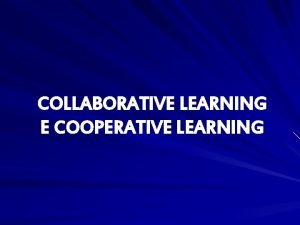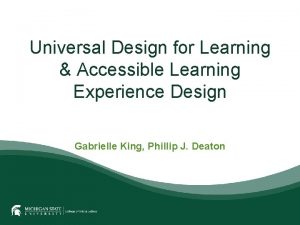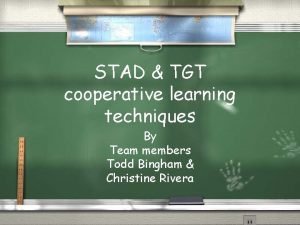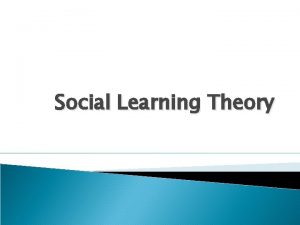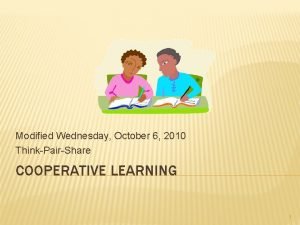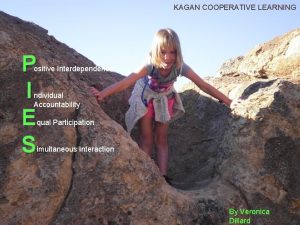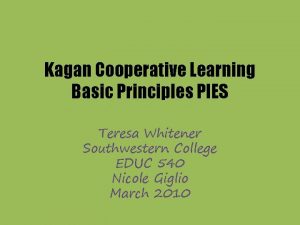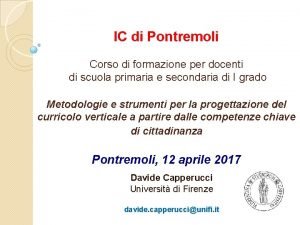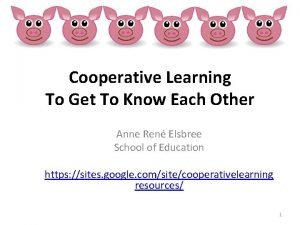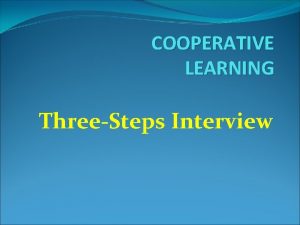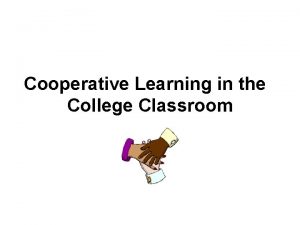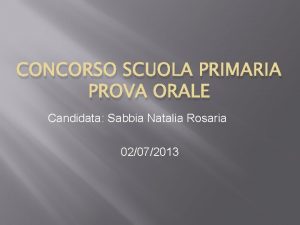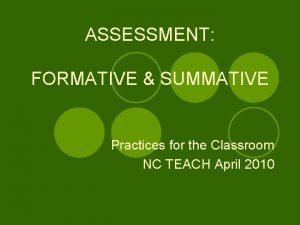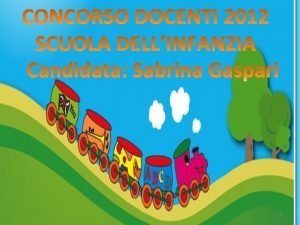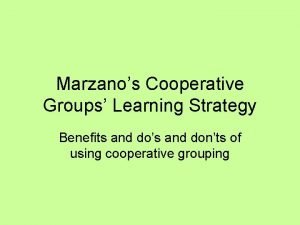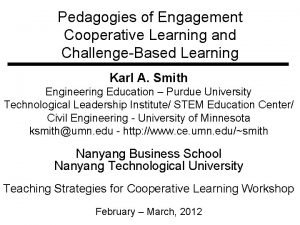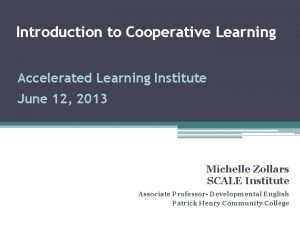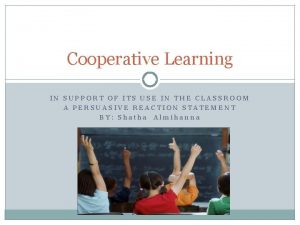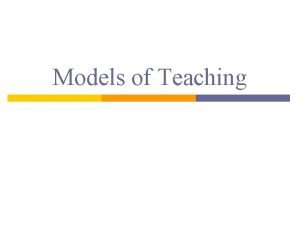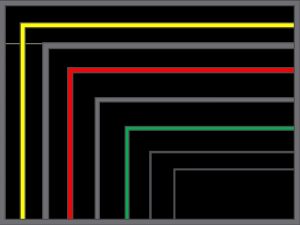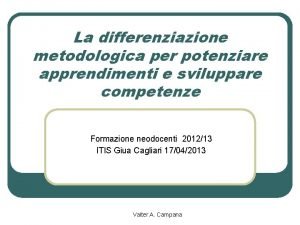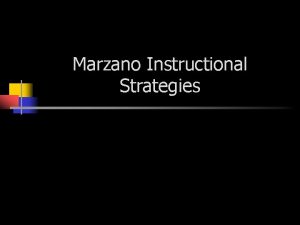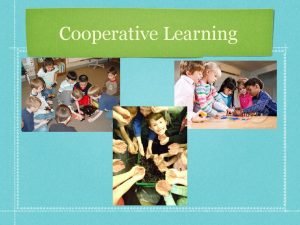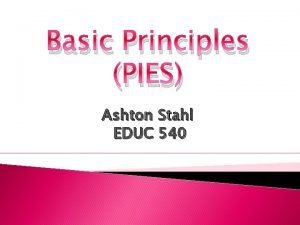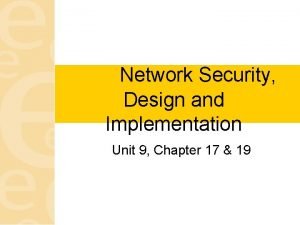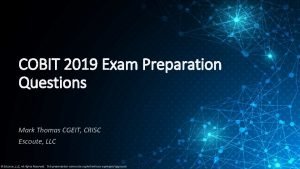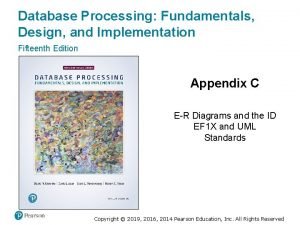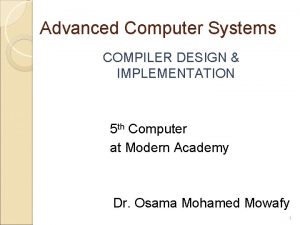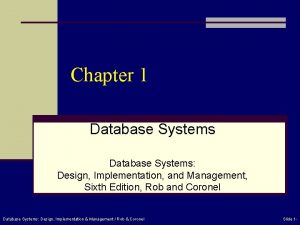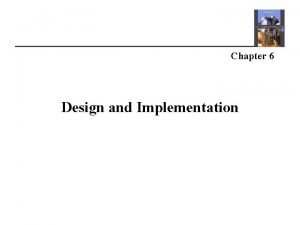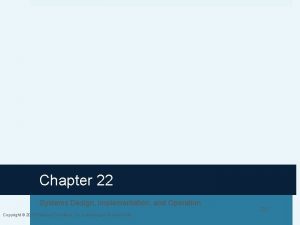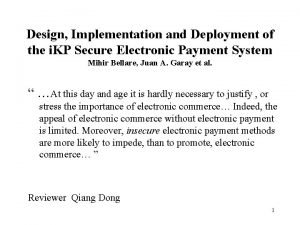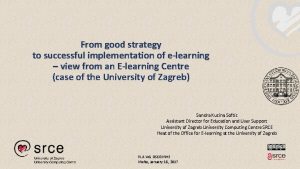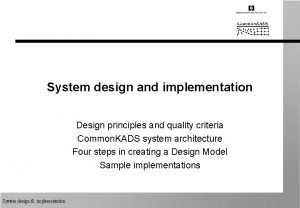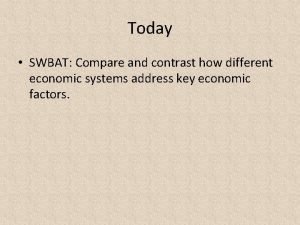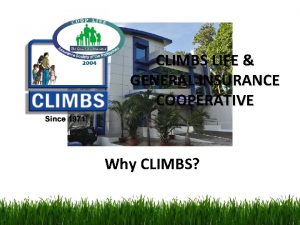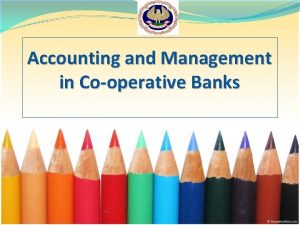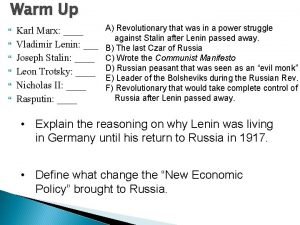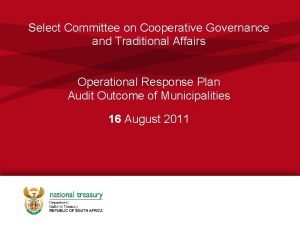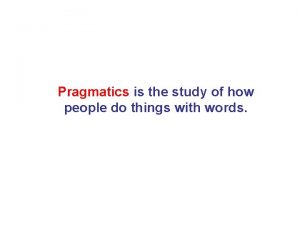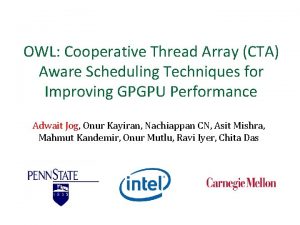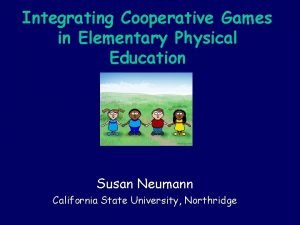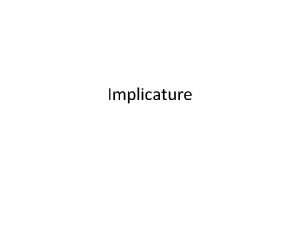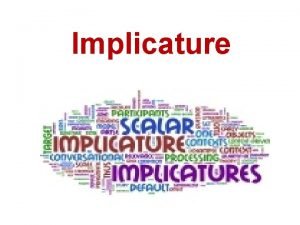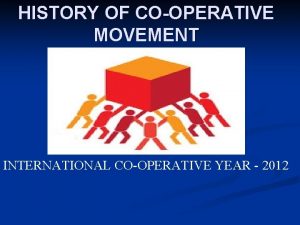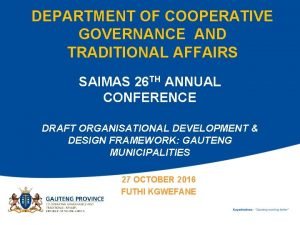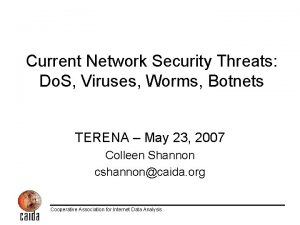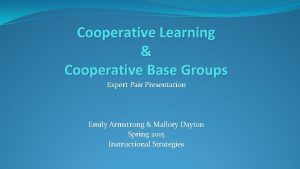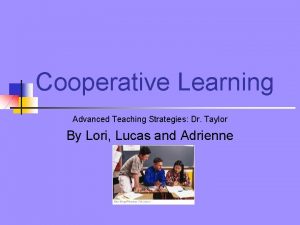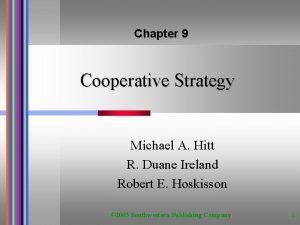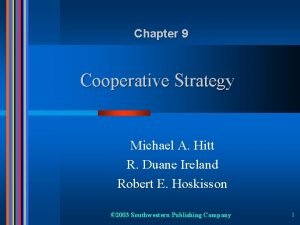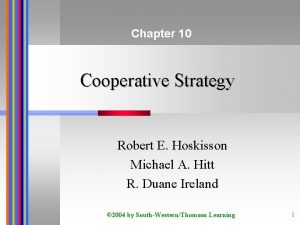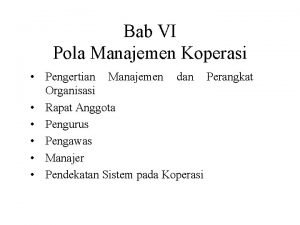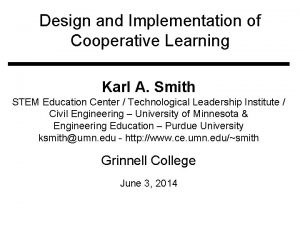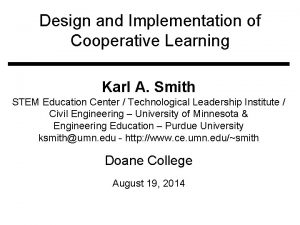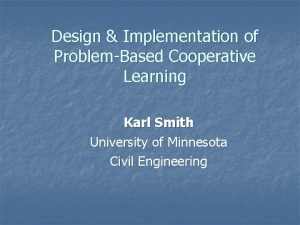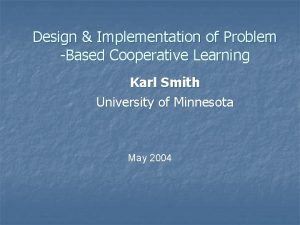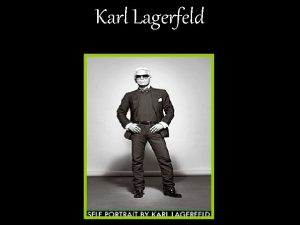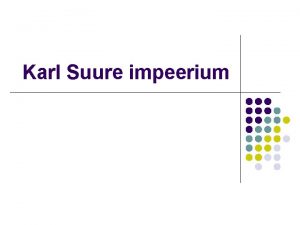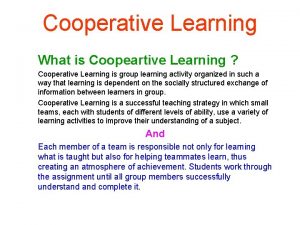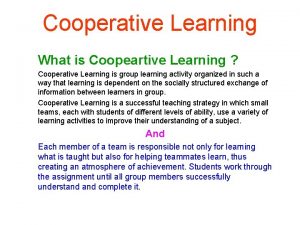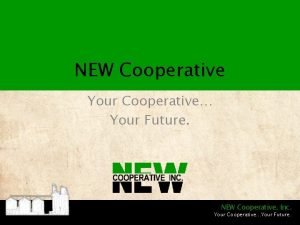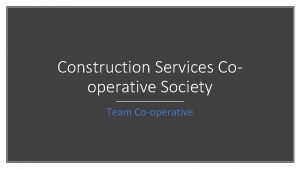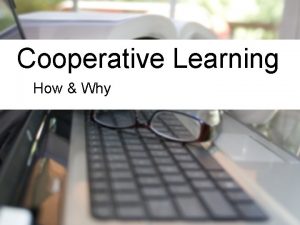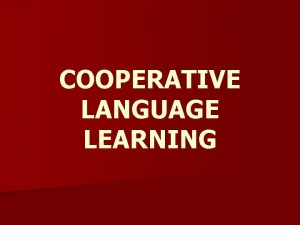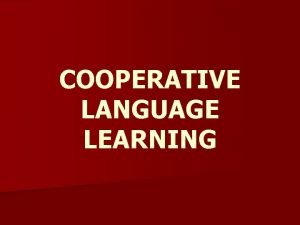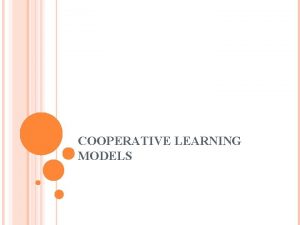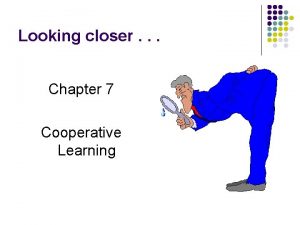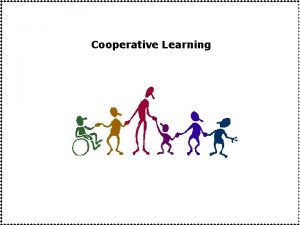Design and Implementation of Cooperative Learning Karl A








































































- Slides: 72

Design and Implementation of Cooperative Learning Karl A. Smith STEM Education Center / Technological Leadership Institute / Civil Engineering – University of Minnesota & Engineering Education – Purdue University ksmith@umn. edu http: //personal. cege. umn. edu/~smith/links. html Fa. CIT Workshop Central Michigan University October 10, 2014

Book Ends on a Class Session Smith, K. A. 2000. Going deeper: Formal small-group learning in large classes. Energizing large classes: From small groups to learning communities. New Directions for Teaching and Learning, 2 2000, 81, 25 -46. [NDTL 81 Ch 3 Going. Deeper. pdf]

Session Summary (Minute Paper) Reflect on the session: 1. Most interesting, valuable, useful thing you learned. 2. Things that helped you learn. 3. Question, comments, suggestions. 4. Pace: Too slow 1. . 5 Too fast 5. Relevance: Little 1. . . 5 Lots 6. Instructional Format: Ugh 1. . . 5 Ah 3

CMU Fa. CIT – Workshop (10 -10 -14 am) 14 12 1 10 2 8 3 6 4 4 5 2 0 Q 4 Q 5 Q 6 Q 4 – Pace: Too slow 1. . 5 Too fast (3. 3) Q 5 – Relevance: Little 1. . . 5 Lots (4. 9) Q 6 – Format: Ugh 1. . . 5 Ah (4. 5)

Workshop Layout • Welcome and Overview • Reflection on Seminar • Formal Cooperative Learning Rationale and Principles • Formal Cooperative Learning Strategies – Cooperative Problem-Based Learning – Cooperative Jigsaw – Cooperative Project-Based Learning • Aligning outcomes, assessment, and instruction • Design and Implementation 5

Active Learning: Cooperation in the College Classroom • Informal Cooperative Learning Groups • Formal Cooperative Learning Groups • Cooperative Base Groups Notes: Cooperative Learning Handout (CL College-912. doc) www. ce. umn. edu/~smith/docs/CL%20 College-912. doc 6

Book Ends on a Class Session Smith, K. A. 2000. Going deeper: Formal small-group learning in large classes. Energizing large classes: From small groups to learning communities. New Directions for Teaching and Learning, 7 2000, 81, 25 -46. [NDTL 81 Ch 3 Going. Deeper. pdf]

Informal CL (Book Ends on a Class Session) with Concept Tests Physics Eric Mazur - Harvard – http: //galileo. harvard. edu Peer Instruction – http: //mazur. harvard. edu/research/detailspage. php? rowid=8 Richard Hake – http: //www. physics. indiana. edu/~hake/ Chemistry Concep. Tests - UW Madison http: //chemcollective. org/tests Video: Making Lectures Interactive with Concep. Tests http: //www. wcer. wisc. edu/archive/cl 1/flag/cat/contests 7. htm Modular. Chem Consortium – http: //chemconnections. org/ STEMTEC - http: //k 12 s. phast. umass. edu/stemtec/ Video: How Change Happens: Breaking the “Teach as You Were Taught” Cycle – Films for the Humanities & Sciences – www. films. com Harvard – Derek Bok Center Thinking Together & From Questions to Concepts: Interactive Teaching in Physics 8 – http: //bokcenter. harvard. edu/

9 http: //groups. physics. umn. edu/physed/Research/MNModel/Model. html

Conceptual Understanding http: //groups. physics. umn. edu/physed/Research/MNModel/FCI. html

Physics (Mechanics) Concepts: The Force Concept Inventory (FCI) • A 30 item multiple choice test to probe student's understanding of basic concepts in mechanics. • The choice of topics is based on careful thought about what the fundamental issues and concepts are in Newtonian dynamics. • Uses common speech rather than cueing specific physics principles. • The distractors (wrong answers) are based on students' common inferences. 11

Workshop Biology Traditional passive lecture vs. “Workshop biology” Source: Udovic et al. 2002

Biology Source: Knight, J. and Wood, W. (2005). Teaching more by lecturing less. Cell Biol Educ. 4(4): 298– 310.

Informal Cooperative Learning Groups Can be used at any time Can be short term and ad hoc May be used to break up a long lecture Provides an opportunity for students to process material they have been listening to (Cognitive Rehearsal) Are especially effective in large lectures Include "book ends" procedure Are not as effective as Formal Cooperative Learning or Cooperative Base Groups

Strategies for Energizing Large Classes: From Small Groups to Learning Communities: Jean Mac. Gregor, James Cooper, Karl Smith, Pamela Robinson New Directions for Teaching and Learning, No. 81, 2000. Jossey- Bass

16

Active Learning: Cooperation in the College Classroom • Informal Cooperative Learning Groups • Formal Cooperative Learning Groups • Cooperative Base Groups See Cooperative Learning Handout (CL College-912. doc) 17

Formal Cooperative Learning Task Groups

Design team failure is usually due to failed team dynamics (Leifer, Koseff & Lenshow, 1995). It’s the soft stuff that’s hard, the hard stuff is easy (Doug Wilde, quoted in Leifer, 1997) Professional Skills (Shuman, L. , Besterfield-Sacre, M. , and Mc. Gourty, J. , “The ABET Professional Skills-Can They Be Taught? Can They Be Assessed? ” Journal of Engineering Education, Vo. 94, No. 1, 2005, pp. 41– 55. )

http: //www. aacu. org/advocacy/leap/documents/Re 8097 abcombined. pdf 20

Top Three Main Engineering Work Activities Civil/Architectural • Management – 45% • Design – 39% • Computer applications – 20% Engineering Total • Design – 36% • Computer applications – 31% • Management – 29% Burton, L. , Parker, L, & Le. Bold, W. 1998. U. S. engineering career trends. ASEE Prism, 7(9), 18 -21. 21

Teamwork 22

Reflection and Dialogue • Individually reflect on the Characteristics of High Performing Teams. Think/Write for about 1 minute – Base on your experience on high performing teams, – Or your facilitation of high performing teams in your classes, or – Or your imagination • Discuss with your team for about 3 minutes and record a list

Characteristics of High Performing Teams? • good leadership • Pro active learner • Shared vision • Common goal • Mutual interdependence • Differentiated roles • Understanding the objectives • Leave the ego at the door • Respecting what everyone brings • Opportunity for everyone to communicate • Accountability, pre-task (zero tolerance) • Giving people tasks based on their gifts/strengths • Reaching consensus • Collaboration – ability to work for common goal • Celebration • No putting down others • Time bound 24

A team is a small number of people with complementary skills who are committed to a common purpose, performance goals, and approach for which they hold themselves mutually accountable • SMALL NUMBER • COMPLEMENTARY SKILLS • COMMON PURPOSE & PERFORMANCE GOALS • COMMON APPROACH • MUTUAL ACCOUNTABILITY --Katzenbach & Smith (1993) The Wisdom of Teams

Cooperative Learning is instruction that involves people working in teams to accomplish a common goal, under conditions that involve both positive interdependence (all members must cooperate to complete the task) and individual and group accountability (each member is accountable for the complete final outcome). Key Concepts • Positive Interdependence • Individual and Group Accountability • Face-to-Face Promotive Interaction • Teamwork Skills • Group Processing http: //www. ce. umn. edu/~smith/docs/Smith-CL%20 Handout%2008. pdf

Teamwork Skills • Communication • Listening and Persuading • Decision Making • Conflict Management • Leadership • Trust and Loyalty

Active Learning: Cooperation in the College Classroom • Informal Cooperative Learning Groups • Formal Cooperative Learning Groups • Cooperative Base Groups See Cooperative Learning Handout (CL College-912. doc) 28

Professor's Role in Formal Cooperative Learning 1. Specifying Objectives 2. Making Decisions 3. Explaining Task, Positive Interdependence, and Individual Accountability 4. Monitoring and Intervening to Teach Skills 5. Evaluating Students' Achievement and Group Effectiveness 29

Decisions, Decisions Group size? Group selection? Group member roles? How long to leave groups together? Arranging the room? Providing materials? Time allocation? 30

Personal Response System • Socrative. com (Socrative Student) • My room 678635 31

Optimal Group Size? A. 2 B. 3 C. 4 D. 5 E. 6 32

Formal Cooperative Learning Task Groups Perkins, David. 2003. King Arthur's Round Table: How collaborative conversations create smart organizations. NY: Wiley.

Group Selection? A. B. C. D. E. Self selection Random selection Stratified random Instructor assign Interest 34

Formal Cooperative Learning – Types of Tasks 1. Jigsaw – Learning new conceptual/procedural material 2. Peer Composition or Editing 3. Reading Comprehension/Interpretation 4. Problem Solving, Project, or Presentation 5. Review/Correct Homework 6. Constructive Controversy 7. Group Tests

Challenge-Based Learning • • • Problem-based learning Case-based learning Project-based learning Learning by design Inquiry learning Anchored instruction John Bransford, Nancy Vye and Helen Bateman. Creating High-Quality Learning Environments: Guidelines from Research on How People Learn 36

Challenge-Based Instruction with the Legacy Cycle The Challenges Generate Ideas Go Public Legacy Cycle Test Your Mettle Multiple Perspectives Research & Revise https: //repo. vanth. org/portal/public-content/star-legacy-cycle 37

Cooperative Problem-Based Learning Format TASK: Solve the problem(s) or Complete the project. INDIVIDUAL: Develop ideas, Initial Model, Estimate, etc. Note strategy. COOPERATIVE: One set of answers from the group, strive for agreement, make sure everyone is able to explain the strategies used to solve each problem. EXPECTED CRITERIA FOR SUCCESS: Everyone must be able to explain the model and strategies used to solve each problem. EVALUATION: Best answer within available resources or constraints. INDIVIDUAL ACCOUNTABILITY: One member from your group may be randomly chosen to explain (a) the answer and (b) how to solve each problem. EXPECTED BEHAVIORS: Active participating, checking, encouraging, and elaborating by all members. INTERGROUP COOPERATION: Whenever it is helpful, check procedures, answers, and strategies with another group. 38

Cooperative Problem-Based Learning Karl A. Smith Engineering Education – Purdue University Civil Engineering - University of Minnesota ksmith@umn. edu http: //www. ce. umn. edu/~smith Estimation Problem 39

First Course Design Experience UMN – Institute of Technology • Thinking Like an Engineer • Problem Identification • Problem Formulation • Problem Representation • Problem Solving Problem-Based Learning

Team Member Roles • Task Recorder • Skeptic/Prober • Process Recorder 41

Technical Estimation Problem TASK: INDIVIDUAL: Quick Estimate (10 seconds). Note strategy. COOPERATIVE: Improved Estimate (~5 minutes). One set of answers from the group, strive for agreement, make sure everyone is able to explain the strategies used to arrive at the improved estimate. EXPECTED CRITERIA FOR SUCCESS: Everyone must be able to explain the strategies used to arrive at your improved estimate. EVALUATION: Best answer within available resources or constraints. INDIVIDUAL ACCOUNTABILITY: One member from your group may be randomly chosen to explain (a) your estimate and (b) how you arrived at it. EXPECTED BEHAVIORS: Active participating, checking, encouraging, and elaborating by all members. INTERGROUP COOPERATION: Whenever it is helpful, check procedures, answers, and strategies with another group.

Group Reports • Estimate – Group 1 – Group 2 –. . . • Strategy used to arrive at estimate – assumptions, model, method, etc. 43

Model 1 (lower bound) let L be the length of the room, let W be its width, let H be its height, and let D be the diameter of a ping pong ball. Then the volume of the room is Vroom = L * W * H, and the volume of a ball (treating it as a cube) is Vball = D 3, so number of balls = (Vroom) / (Vball) = (L * W * H) / (D 3).

Model 2 (upper bound) let L be the length of the room, let W be its width, let H be its height, and let D be the diameter of a ping pong ball. Then the volume of the room is Vroom = L * W * H, and the volume of a ball (treating it as a sphere) is Vball = 4/3 πr 3, so number of balls = (Vroom) / (Vball) = (L * W * H) / (4/3 π r 3).

Model 1 (Vroom / D 3 ball) B Lower Bound Model 2 (Vroom / (4/3 πr 3 ball)) B Upper Bound/Lower Bound = 6/π ≈ 2 How does this ratio compare with 1. The estimation of the diameter of the ball? 2. The estimation of the dimensions of the room?

Model World Real World Model Vr/Vb 47 Calc

*Based on First Year Engineering course – Problem-based cooperative learning How to Model It published in 1990.

Problem-Based Learning Subject-Based Learning START Apply it Given problem to illustrate how to use it Told what we need to know Problem posed Learn it Normative Professional Curriculum: 1. Teach the relevant basic science, Learn it Identify what we need to know 2. Teach the relevant applied science, and 3. Allow for a practicum to connect the science to actual practice. 49

Group Processing Plus/Delta Format Plus (+) Things That Group Did Well Delta (∆) Things Group Could Improve

Cooperative Learning is instruction that involves people working in teams to accomplish a common goal, under conditions that involve both positive interdependence (all members must cooperate to complete the task) and individual and group accountability (each member is accountable for the complete final outcome). Key Concepts • Positive Interdependence • Individual and Group Accountability • Face-to-Face Promotive Interaction • Teamwork Skills • Group Processing

54 http: //scaleup. ncsu. edu/

http: //www. ncsu. edu/PER/scaleup. html

http: //web. mit. edu/edtech/casestudies/teal. html#video

http: //tile. uiowa. edu/ 57

Inside an Active Learning Classroom • STSS at the University of Minnesota http: //vimeo. com/andyub/activeclassroom “I love this space! It makes me feel appreciated as a student, and I feel intellectually invigorated when I work and learn in it. ”

http: //www. udel. edu/inst/ 60

Cooperative Jigsaw JIGSAW SCHEDULE COOPERATIVE GROUPS (3 -4 members) PREPARATION PAIRS CONSULTING/SHARING PAIRS TEACHING/LEARNING IN COOPERATIVE GROUPS WHOLE CLASS REVIEW www. jigsaw. org/ 61

Professor's Role in Formal Cooperative Learning 1. Specifying Objectives 2. Making Decisions 3. Explaining Task, Positive Interdependence, and Individual Accountability 4. Monitoring and Intervening to Teach Skills 5. Evaluating Students' Achievement and Group Effectiveness 88

Team Charter • • • Team name, membership, and roles Team Mission Statement Anticipated results (goals) Specific tactical objectives Ground rules/Guiding principles for team participation Shared expectations/aspirations

Code of Cooperation • EVERY member is responsible for the team’s progress and success. • Attend all team meetings and be on time. • Come prepared. • Carry out assignments on schedule. • Listen to and show respect for the contributions of other members; be an active listener. • CONSTRUCTIVELY criticize ideas, not persons. • Resolve conflicts constructively, • Pay attention, avoid disruptive behavior. • Avoid disruptive side conversations. • Only one person speaks at a time. • Everyone participates, no one dominates. • Be succinct, avoid long anecdotes and examples. • No rank in the room. • Respect those not present. • Ask questions when you do not understand. • Attend to your personal comfort needs at any time but minimize team disruption. • HAVE FUN!! • ? Adapted from Boeing Aircraft Group Team Member Training Manual

Ten Commandments: An Affective Code of Cooperation • Help each other be right, not wrong. • Look for ways to make new ideas work, not for reasons they won't. • If in doubt, check it out! Don't make negative assumptions about each other. • Help each other win, and take pride in each other's victories. • Speak positively about each other and about your organization at every opportunity. • Maintain a positive mental attitude no matter what the circumstances. • Act with initiative and courage, as if it all depends on you. • Do everything with enthusiasm; it's contagious. • Whatever you want; give it away. • Don't lose faith. • Have fun Ford Motor Company 91

Team Charter Examples & Research • Team Charter – Developed by Vivian Corwin and Marilyn A. Uy for COM 321 (Organizational Behaviour) Gustavson School of Business, University of Victoria • Group Ground Rules Contract Form – Developed by Deborah Allan, University of Delaware • Mathieu, John E. & Rapp, Tammy L. 2009. Laying the foundation for successful team performance trajectories: The role of team charters and performance strategies. Journal of Applied Psychology, 94(1), 90103 92

93

Mathieu, John E. & Rapp, Tammy L. 2009. Laying the 94 foundation for successful team performance trajectories: The role of team charters and performance strategies. Journal of Applied Psychology, 94(1), 90 -103

Active Learning: Cooperation in the College Classroom • Informal Cooperative Learning Groups • Formal Cooperative Learning Groups • Cooperative Base Groups See Cooperative Learning Handout (CL College-912. doc) 95

Cooperative Base Groups • Are Heterogeneous • Are Long Term (at least one quarter or semester) • Are Small (3 -5 members) • Are for support • May meet at the beginning of each session or may meet between sessions • Review for quizzes, tests, etc. together • Share resources, references, etc. for individual projects • Provide a means for covering for absentees 96

Edmonson-Competitive_Advantage_of_Learning-HBR-2008. pdf

Designing and Implementing Cooperative Learning • Think like a designer • Ground practice in robust theoretical framework • Start small, start early and iterate • Celebrate the successes; problem-solve the failures

100

101

Resources • Design Framework – How People Learn (HPL) & Understanding by Design (Ud. B) Process • Content Resources • Cooperative Learning • Other Resources – Ambrose, S. , et. al. 2010. How learning works: 7 research based principles for smart teaching. Jossey-Bass – Bransford, John, Vye, Nancy, and Bateman, Helen. 2002. Creating High-Quality Learning Environments: Guidelines from Research on How People Learn. The Knowledge Economy and Postsecondary Education: Report of a Workshop. National Research Council. Committee on the Impact of the Changing Economy of the Education System. P. A. Graham and N. G. Stacey (Eds. ). Center for Education. Washington, DC: National Academy Press. http: //www. nap. edu/openbook/0309082927/html/ – Pellegrino, J. 2006. Rethinking and redesigning curriculum, instruction and assessment: What contemporary research and theory suggests. http: //www. skillscommission. org/commissioned. htm – Smith, K. A. , Douglas, T. C. , & Cox, M. 2009. Supportive teaching and learning strategies in STEM education. In R. Baldwin, (Ed. ). Improving the climate for undergraduate teaching in STEM fields. New Directions for Teaching and Learning, 117, 19 -32. San Francisco: Jossey-Bass. – Streveler, R. A. , Smith, K. A. and Pilotte, M. 2012. Content, Assessment and Pedagogy (CAP): An Integrated Engineering Design Approach. In Dr. Khairiyah Mohd Yusof, Dr. Shahrin Mohammad, Dr. Naziha Ahmad Azli, Dr. Mohamed Noor Hassan, Dr. Azlina Kosnin and Dr. Sharifah Kamilah Syed Yusof (Eds. ). Outcome-Based Education and Engineering Curriculum: Evaluation, Assessment and Accreditation, Universiti Teknologi Malaysia, Malaysia [Streveler-Smith-Pilotte_OBE_Chapter-CAP-v 11. pdf] – Wiggins, G. & Mc. Tighe, J. 2005. Understanding by Design: Expanded Second Edition. Prentice Hall. – Donald, Janet. 2002. Learning to think: Disciplinary perspectives. San Francisco: Jossey-Bass. – Middendorf, Joan and Pace, David. 2004. Decoding the Disciplines: A Model for Helping Students Learn Disciplinary Ways of Thinking. New Directions for Teaching and Learning, 98. – Cooperative Learning (Johnson, Johnson & Smith) - Smith web site – www. ce. umn. edu/~smith – Smith (2010) Social nature of learning: From small groups to learning communities. New Directions for Teaching and Learning, 2010, 123, 11 -22 [NDTL-123 -2 -Smith-Social_Basis_of_Learning-. pdf] – Smith, Sheppard, Johnson & Johnson (2005) Pedagogies of Engagement [Smith. Pedagogies_of_Engagement. pdf] – Johnson, Johnson & Smith. 1998. Cooperative learning returns to college: What evidence is there that it works? Change, 1998, 30 (4), 26 -35. [CLReturnsto. College. pdf] – University of Delaware PBL web site – www. udel. edu/pbl – PKAL – Pedagogies of Engagement – http: //www. pkal. org/activities/Pedagogies. Of. Engagement. Summit. cfm – Fairweather (2008) Linking Evidence and Promising Practices in Science, Technology, Engineering, and Mathematics (STEM) Undergraduate Education -102 http: //www 7. nationalacademies. org/bose/Fairweather_Commissioned. Paper. pdf
 Collaborative learning vs cooperative learning
Collaborative learning vs cooperative learning Accessible learning experience design and implementation
Accessible learning experience design and implementation Cooperative vs collaborative learning
Cooperative vs collaborative learning Tgt cooperative learning
Tgt cooperative learning Social definition
Social definition Cooperative learning ideatore
Cooperative learning ideatore Think pair share cooperative learning
Think pair share cooperative learning Kagan pies
Kagan pies Kagan pies
Kagan pies Ic camigliano
Ic camigliano Pigs face cooperative learning
Pigs face cooperative learning Three step interview
Three step interview Example of cooperative learning
Example of cooperative learning Griglia di osservazione cooperative learning
Griglia di osservazione cooperative learning Evaluation continuum
Evaluation continuum Griglia di osservazione cooperative learning
Griglia di osservazione cooperative learning Marzano cooperative learning
Marzano cooperative learning Formal cooperative learning
Formal cooperative learning Cooperative learning institute
Cooperative learning institute Types of cooperative learning
Types of cooperative learning Types of learning model
Types of learning model Approaches of cooperative learning
Approaches of cooperative learning Classificazione delle metodologie didattiche
Classificazione delle metodologie didattiche Instructional strategies marzano
Instructional strategies marzano Formal cooperative learning
Formal cooperative learning Cooperative learning round robin
Cooperative learning round robin Kagan pies
Kagan pies Cuadro comparativo e-learning y b-learning
Cuadro comparativo e-learning y b-learning Network design and implementation
Network design and implementation Uiecu hours
Uiecu hours Cobit 2019 design and implementation exam questions
Cobit 2019 design and implementation exam questions Intune rollout plan
Intune rollout plan Fundamentals of design
Fundamentals of design Channel design and implementation
Channel design and implementation Advanced compiler design and implementation
Advanced compiler design and implementation Database system design implementation and management
Database system design implementation and management Design and implementation issues of dsm
Design and implementation issues of dsm Design and implementation of data plane
Design and implementation of data plane Host target development in software engineering
Host target development in software engineering System design implementation and operation
System design implementation and operation Design and implementation of e secure transaction
Design and implementation of e secure transaction Database systems design implementation
Database systems design implementation E learning implementation strategy
E learning implementation strategy Implementation design principles
Implementation design principles Compare and contrast, karl marx and adam smith venn diagram
Compare and contrast, karl marx and adam smith venn diagram Climbs life and general insurance cooperative
Climbs life and general insurance cooperative What is a contractual brief
What is a contractual brief Iphil savings and credit cooperative
Iphil savings and credit cooperative Crr in accounting
Crr in accounting Karl marx vladimir lenin and joseph stalin
Karl marx vladimir lenin and joseph stalin Base and superstructure karl marx
Base and superstructure karl marx Inductive vs analytical learning
Inductive vs analytical learning Inductive and analytical learning in machine learning
Inductive and analytical learning in machine learning Lazy learning vs eager learning
Lazy learning vs eager learning Tony wagner's seven survival skills
Tony wagner's seven survival skills Ohio valley educational cooperative
Ohio valley educational cooperative Cooperative model example
Cooperative model example Cooperative governance
Cooperative governance Generalized conversational implicature examples
Generalized conversational implicature examples Cooperative thread array
Cooperative thread array Features of industrial park
Features of industrial park Cooperative pe games
Cooperative pe games Cooperative principle in pragmatics
Cooperative principle in pragmatics The cooperative principle examples
The cooperative principle examples Karve committee on cooperative principles
Karve committee on cooperative principles Cooperative governance
Cooperative governance Cooperative association
Cooperative association Cooperative base groups
Cooperative base groups Categories of cooperative
Categories of cooperative Corporate level cooperative strategy
Corporate level cooperative strategy Corporate level cooperative strategy
Corporate level cooperative strategy Corporate level cooperative strategy
Corporate level cooperative strategy Contoh cooperative combine
Contoh cooperative combine
